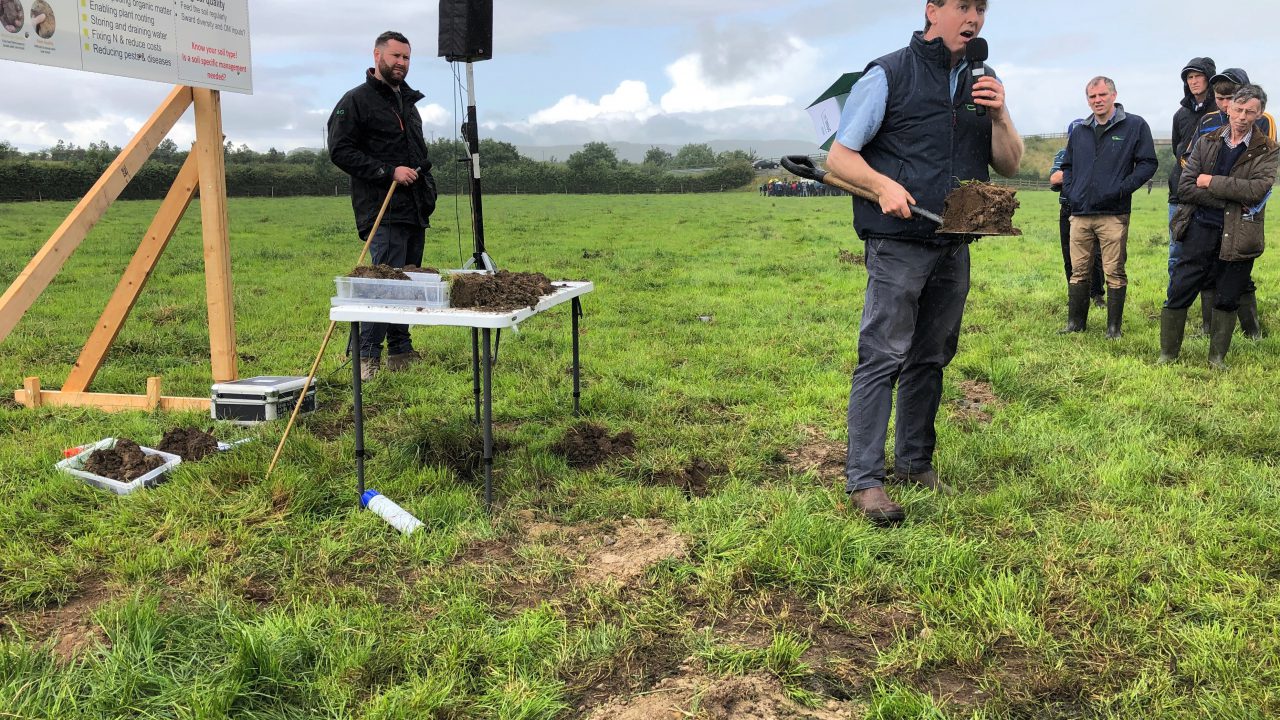“Oftentimes farmers think about what is above the ground because that is what is going to feed the cows; but what is below the ground is our most precious on-farm resource.”
This was a statement made by Bill Reilly – a regional manager with Germinal Ireland – during Germinal Ireland’s reseeding event which was held this week, on Wednesday, August 7.
Opening the discussion on soil health, Bill said: “Every tonne of dry matter [DM] produced on farm is worth €170 and where we have soil compaction taking place, we estimate that we have a yield reduction of up to 20-25%; so, it is costing you money.
“People focus on soil fertility, but I think more and more people are beginning to look at soil health and simply getting out with a spade is going to tell you a lot.”
Also involved in the discussion – on the day – was Teagasc’s Mark Plunkett who had some soil samples on display to demonstrate and explain the effects that different soil structures can have on the grass plant.
Advising farmers on how they can assess the soil on their farms, he said:
“If you take a spade and take out the top 20cm to 25cm of soil, assess it and see how good it is in terms of soil structure.
“The first thing you are looking at is the colour of the soil – you are looking for a nice rich-brown colour. This indicates that the soil is healthy, well structured and there is good nutrient availability.
Secondly, you need to look at the shape and the size of the aggregates.”
On display on the day were two soil samples. In one, the soil aggregates were small, contained lots of roots and broke down very easily; it crumbled in Mark’s hand.
In the second, the aggregates were more blocky in nature and much more difficult to break down – as they were compacted together. This sample was sourced from the area around the drinking trough in the paddock.
Explaining why this is not a favorable soil structure, Mark said: “This sample has been poached; it is not a nice place for earthworms and in terms of nutrient availability, they would not be as available as the previous sample.
“It’s just about trying to manage our soils as best we can – such as in the shoulders of the year or when the contractor arrives; to minimise the damage.”
But what is the solution?
Finally, Mark advised farmers on what they can do with soil which has been damaged – due to poaching or by machinery.
Farmyard manure is probably the number one solution because you are putting a food source on the surface of the ground, to encourage the earthworms to break up that damaged layer.
“So, if there is an area of your farm that is performing poorly – due to damage to the soil structure – target the farmyard manure to these areas,” concluded Mark.


